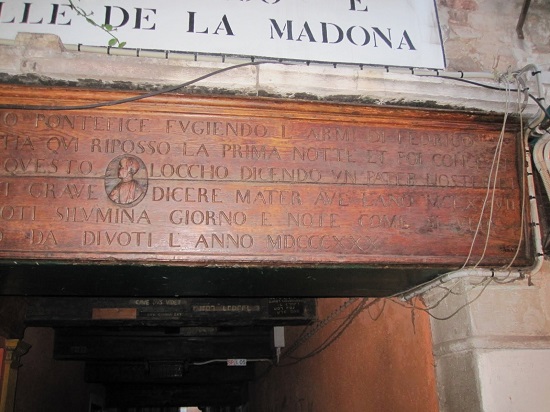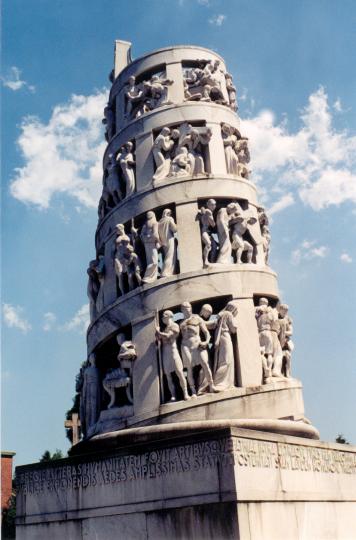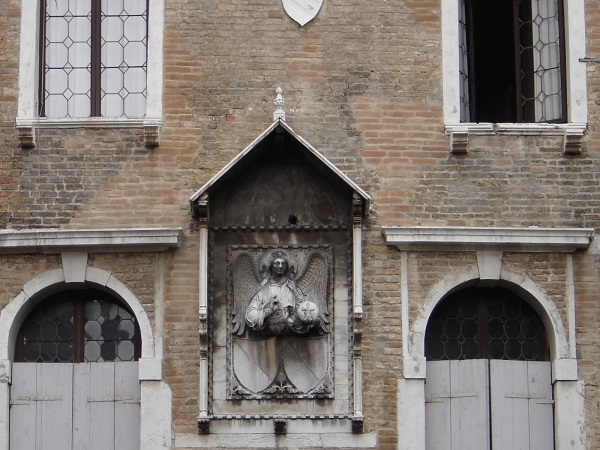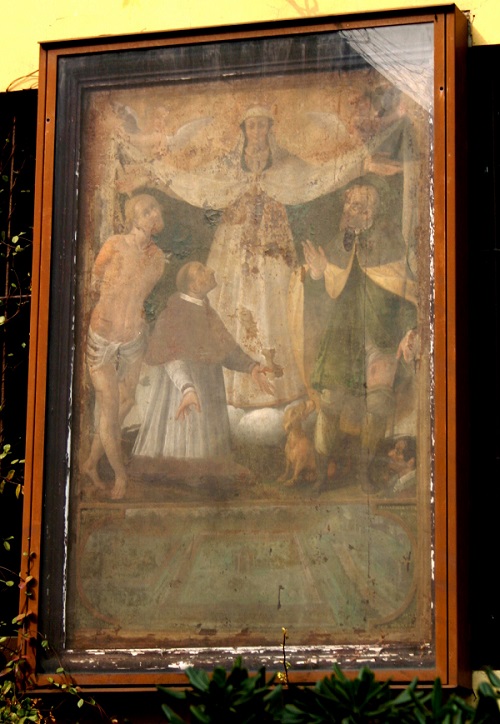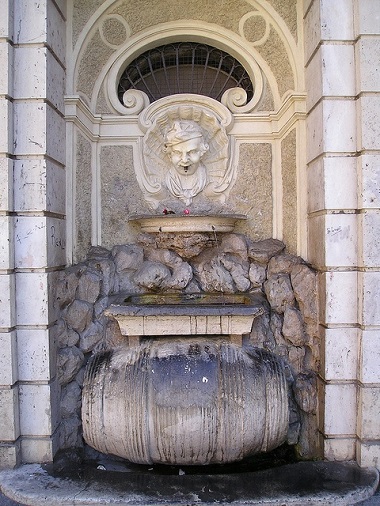Just a short walk from the central railway station, a Renaissance chapel has miraculously survived. Its arched portico, squeezed in between the large buildings, is reminiscent og the Ponticella del Bramante at Castello Sforzesco. Long neglected – and thus a victim of vandals, the elements and repeated cleaning with heavy detergents that erased a large part of the decoration – the chapel underwent a number of restoration projects during the twentieth century. In spite of this chequered past, it does still maintain some of the refined graffito decoration typical of the late fifteenth century (the effigies of saints and prophets in the cupola are, however, only partly recognizable). This feature confirms that the chapel dates from the same period as the Ponticella.
A small three-apsed oratory surmounted by an octagonal drum and a slender lantern, the chapel stands on ground purchased in 1498 by Gian Giacomo Pozzobonelli, a nobleman close to the Sforza family, in order to extend his estates. The following year he commissioned a ten-bay portico to link this small building to a complex of three other structures and two courtyards. Given its location in what was then open countryside, this must have been a rural residence (cascina). perhaps based on a previous structure that had belonged to a monastery. There is debate among historians as to who actually built the chapel and the portica. True, some features – such as the shell motifs, the fake pilasters in the portico and the tondi used to emphasise geometrical shapes – are typical of Donate Bramante, but this is probably the work of one of his followers.
The urban development regulations approved in 1898 led to the demolition of the cascina and part of the porticoed arcade. However, when around this time Luca Beltrami was carrying out restoration work at Castello Sforzesco, he based part of his restoration on one of the graffito scenes decorating the portico, which depicted the Filarete Tower before its demolition in 1521. The original graffito work has since been lost, but there is a reproduction of it under the Ponitcella at the Castello.
So the next time you are in Milan take a walk to 4, Via Andrea Doria and take in the beauty of this long forgotten Renaissance beauty.



